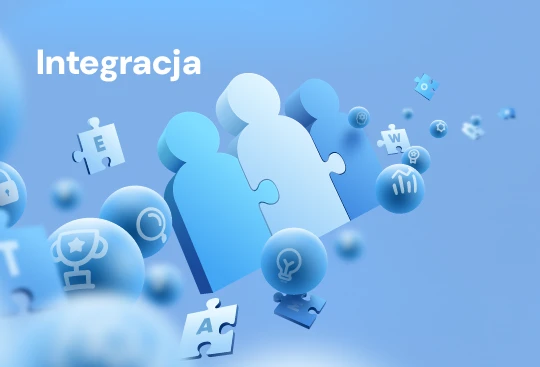What is an ERP system? About company management solutions in the context of modern business needs
In times of dynamically changing markets, increasing competition, and high consumer expectations, an ERP system is essential for the effectiveness of business processes, and therefore for the efficiency and profitability of a company. A company needs an ERP system to efficiently plan and execute activities, optimally manage its budget, and also to set development directions through sound business decisions. What is ERP and what is its importance for business?
ERP systems were developed in response to the growing needs of businesses, which had been changing over the decades, but also thanks to information technology, which first enabled their creation and then their refinement. The first such solutions were solely used to control warehouse inventory levels. Over time, they gained additional functionality that also facilitated resource planning in terms of the quantity and type of required raw materials – these were Material Requirements Planning (MRP) systems. However, it quickly became clear that other aspects of business operations also required technological support for process efficiency and company profitability.
ERP system for companies
Resource planning and management – this is a brief definition of an ERP (Enterprise Resource Planning) system. This refers to resources from every department within a company. Enterprise software integrates all processes, including all areas – accounting and finance, HR and payroll, document flow, warehouse, production, logistics, sales, marketing, customer service, order acceptance and fulfillment, customer contact, analysis, and reporting. In this way, it facilitates communication between departments, providing employees with access to current and standardized information.
An integrated ERP system is universal software:
- with an architecture consistent with the company's structure,
- with functionalities aligned with the scope of each business activity.
This allows it to be used in companies of all sizes and industries. In each case, it helps with planning, management, analysis, billing, and forecasting, meeting the needs of the enterprise.
"Modern ERP systems are significantly different from those offered just a few years ago, or rather, the expectations of users have changed; they are much better informed about current capabilities and have more specific requirements. Naturally, along with changing technology, IT systems for companies have also evolved, gaining a number of innovations," adds Paulina Wizmur, a sales consultant for ERP systems. "Among the features that are decisive when choosing a system, users point to efficiency, responsiveness, and ease of access to information. The ability to respond quickly and efficiently to legal or logistical changes (updates) in rapidly changing market conditions is also important." “Today, we can therefore speak of intelligent ERP IT systems of a new generation, in which, in addition to the functionalities expected by users, machine learning and even artificial intelligence are increasingly used,” adds Daniel Duda, Director of the ERP Systems Division at OPTeam.
Features of business software
ERP systems offer a range of standard solutions that ensure their usability and universal applicability, regardless of the type of business. At the same time, they are constantly being updated with technological innovations, responding to market changes and, consequently, the expectations of growing and modern enterprises. Therefore, the choice of an ERP system is determined by its many features.
1. ERP modules grouping functionalities.
A characteristic feature of ERP systems is their modular structure, which allows the software to be tailored to the specific business activity of the company. This is because each module provides precisely the functions needed to manage processes in a specific department. For example, the Finance and Accounting module in Comarch ERP XL is equipped with features that facilitate financial analysis, periodic accounting, cost accounting, and forecasting expenses and revenues. The CRM module, in turn, offers a range of dedicated functionalities supporting sales management – from ordering to transaction closure. The TimeLine ERP system, on the other hand, stands out for its extensive production process module, which includes functionalities that facilitate planning and monitoring product production, resource control, and organizing material supplies.
2. Flexibility in configuration.
The modular design makes an ERP system a flexible solution. Depending on the individual needs of the company and the type and scope of business activities, the software can be implemented in any functional scope. A sales company will not need a production module, so the investment will be limited to solutions that fit its business profile. If the business situation requires it, additional modules can be implemented at any time.
The flexibility of an ERP system, however, extends beyond the free configuration of modules, including the dedicated functionalities grouped within them. It also allows for the ability to customize interface views to individual preferences and even modify the building blocks of functionality. An example is the TimeLine ERP system, which features a built-in Rapid Customization tool, allowing for independent modification and expansion of the software (forms, tables, charts, etc.) within the database, reports, printouts, and interface.
ERP systems are also flexible due to their scalability, meaning they can expand with the company's growth. This ensures the software operates efficiently regardless of the number of users, processes supported, or the amount of data collected – a crucial factor in the age of Big Data. Furthermore, ERP systems can be integrated with external software and complementary business applications within a single IT infrastructure.
3. A central database with up-to-date data.
For a modern enterprise operating in a dynamically changing, highly competitive market, the ability to make quick and accurate business decisions based on reliable data is crucial. Therefore, ERP system modules are integrated into a single database with a defined structure. This database serves as a central repository for information collected from various sources in real time. Data acquisition is largely automated, reducing the time-consuming task of manually entering information. "Data integration is an important feature of an ERP system. It means that once data is entered, regardless of the module in which it is stored, it is available to all users, significantly reducing the time required to process individual operations in the system and avoiding potential errors during re-entry," explains Paulina Wizmur, a sales consultant for ERP systems. This allows for the organization and streamlining of tasks, eliminating duplication and data dispersion.
Additionally, with Business Intelligence solutions built into or integrated with the ERP system, users have access to consistent reports based on current data processed in real time. For example, in the TimeLine ERP production management system, the Power Pivot BI analysis and reporting module, an integral part of the software, enables ongoing performance evaluation by comparing data collected on an ongoing basis with the assumptions made in the production plan. Analysis results are presented visually in configurable management dashboards. The Comarch BI Point analytical tool, in turn, allows for the collection of large data sets required for comprehensive analysis. Both individual users and designated groups can access the analyses, and their results are presented via interactive dashboards.
With BI platforms, employees in specific departments have access to always up-to-date and consistent reports based on data processed in real time. This allows:
- better control the flow of processes across departments,
- verify process efficiency and compare it with initial assumptions,
- quickly identify problems that reduce efficiency,
- implement optimization changes and corrective actions on an ongoing basis,
- and assess the situation in every area of the enterprise.
Analysis conducted using Business Intelligence tools provides a reliable basis for making quick and accurate business decisions aimed at increasing operational efficiency and maximizing profits.
4. Internet technology.
"Modern ERP systems are expected to be accessible, meaning that all authorized users can use the software and the collected data, regardless of their location," notes Daniel Duda, Director of the ERP Systems Division. The proliferation of internet and cloud technologies has had a significant impact on changes in ERP systems in this context. Initially, ERP systems were installed locally, within the company's own resources. This necessitated a server room with hardware to run the software, which incurs additional costs. Internet access led to software being installed in a SaaS model, as a cloud service using remote servers. As a result, modern software for companies:.
- it is accessible from a web browser,
- is operated from mobile devices,
- and allows for data collection in the cloud.
This makes information management even easier, as it's possible from anywhere and at any time, without the need to install software on every device. "Such quick and direct access to data means that all tasks are performed more efficiently and effectively," adds Daniel Duda, Director of the ERP Systems Division.
Examples of ERP systems
The market offers ERP solutions with a diverse range of functionalities, tailored to the needs and capabilities of large, medium, and small businesses. These include comprehensive systems for managing the entire enterprise (Comarch ERP XL, TETA ERP), as well as specialized tools designed for specific departments (e.g., HR and payroll, accounting) or tailored to specific business profiles (e.g., production, warehousing, logistics, sales). Manufacturers also offer dedicated applications that complement the functionalities of the core software, such as tools for HR processes that facilitate remote employee management.
It's worth taking a closer look at the most popular and frequently chosen IT solutions from both polish and international manufacturers.
- Comarch ERP XL – a system designed for medium-sized and large enterprises of any business profile. It includes a range of functionalities organized into modules corresponding to departments within each company's organizational structure. It provides detailed business analyses and comprehensive reports necessary to assess the effectiveness of both individual departments and the entire company. The software is available in server versions and in Software as a Service (SaaS) versions, allowing remote access. The manufacturer offers additional native tools for system integration, enhancing capabilities and user experience (e.g., a mobile app for sales representatives).
- Comarch ERP Optima – software for small and medium-sized businesses across all industries. It offers functionalities that streamline processes in key areas of operations: accounting, HR and payroll, and sales and marketing. Built-in CRM solutions facilitate customer relationship management. The software also includes mobile applications that provide access to information from anywhere.
- Comarch WMS – a system that streamlines warehouse process management. It comprises two functional solutions: WMS Management for managers and dispatchers and WMS Warehouse Manager for warehouse operators. It facilitates the control of goods flow and supports ordering and resource planning within the warehouse.
- Comarch BI Point – an analytical and reporting platform providing quick access to data on processes occurring in all areas of the enterprise. The solution enables the creation of advanced analyses and reports to assess the effectiveness of business operations. Data processed within the platform is obtained from any IT solutions used within the enterprise. The tool is available in five languages (Polish, German, English, Spanish, and French), which will undoubtedly be appreciated by international companies.
- TimeLine – a specialized production management system incorporating the functionality of solutions such as APS, MES, and MRP. It features a built-in BI Pivot tool for analysis and reporting, which acquires and processes data in real time. Additionally, a QC tool facilitates quality control of the manufacturing process, semi-finished products, and finished products. A key advantage of the software is the CAD integration option available in the PDM functional area, which automatically imports the project assembly list into the system. The software also features a simulation of the production process on a plan, performed on a Gantt chart or calendar, without disrupting current production lines. This allows for quick preliminary project calculations for quotation preparation. A distinctive feature of the software is the built-in Rapid Application Development (RAD) tool, which allows users to modify elements in the reporting, interface, and database areas.
- TETA ERP – The TETA ERP system is a universal solution, adapted to the requirements of companies, universities, and institutions alike. It offers a range of key functionalities that streamline processes across all departments, providing employees with constant access to up-to-date data. This facilitates efficient task execution and rapid management decision-making. The TETA ERP system is fully flexible, allowing for the selection of a specific set of functionalities, with the option to implement additional modules in the future if required by the organization.
- TETA HR – software supporting both soft and hard HR activities. Designed for medium-sized and large companies and institutions with advanced HR management needs, the system automates processes such as filing tax returns, sending bank transfers, and managing employee competencies. It also includes a built-in Learning Management System training platform.
- TETA ME – The TETA ME mobile app provides remote access to personnel data, leave requests, and work schedules, speeding up task execution and increasing process efficiency. Users can access the solution from a browser installed on their smartphone or tablet. The app includes a "My Profile" module, where employees can view key employment-related information, such as current salary, details of family members registered for insurance, and personal contact information.
How to choose an ERP system?
Analyzing the market, you'll notice that software vendors offer dozens of solutions, ranging from more advanced to more advanced ERP systems with specific functionalities. Therefore, when choosing an IT solution, it's crucial to prioritize the company's needs. It's worth carefully analyzing the problems that will be solved by properly implementing the tool. It's important to consider whether support is required for a specific department or the entire organization.
The decision to choose a system is also influenced by the fact that, after implementation, the software will be used for many years. This is a costly, yet necessary, investment for the company. Therefore, it should be carefully considered. If, for some reason, the information gathered still prevents you from making a choice, it's worth considering a software demo. Most vendors offer free demos of their products for testing purposes.
What should you consider when choosing an ERP system?
- Functionality – The system should primarily include those functionalities the company needs to improve processes in areas where problems are actually occurring. It's also worth checking whether the software allows for potential expansion of its functional scope as the company grows. The frequency of software updates provided by the manufacturer is also crucial to ensure it continually meets standards resulting from legal and economic changes.
- Adaptation to needs – Most available systems can be freely configured within the available modules. This means that only those functionalities the company actually needs can be selected and implemented. This allows for a better solution tailored to the company's needs, in line with the implementation budget. It also prevents situations where some of the system's modules simply remain unused.
- Ease of use – the system should have a simple, clear, and intuitive interface so that employees can quickly learn to use it, and subsequent use of the solution is hassle-free. A benefit of modern tools is the ability to customize interface elements to individual user needs.
- Implementation – the time required for implementation is usually several months. The implementation and configuration process of the system requires the involvement of numerous specialists, both from the technology partner and the organization itself. Therefore, it's worth investing in the competence of IT specialists and choosing those experienced in software implementation. Training for the organization's employees in the use and operation of the system will also be crucial.
- Post-implementation support – implementing an ERP system is not everything. Post-implementation support, updates and support for software maintenance, as well as the ability to expand its functionality are equally important. If the software is to be implemented in an international enterprise, it's worth considering the possibility of currency conversion and adaptation to applicable legal regulations in other countries.
What are the costs of ERP systems?
Implementing an ERP system is undoubtedly a significant investment, but it's very difficult to precisely estimate. This is because the total cost depends on several factors that must be considered when selecting a solution to stay within the planned budget. The calculation should take into account the price of the software itself (with selected modules), the number of workstations with system access, and the cost of implementation (including analysis, implementation, and configuration). The software's launch time undoubtedly has a significant impact on the cost, which depends on the number of features implemented and the scope of integration with other IT solutions. Furthermore, the period of technical support after implementation and the licensing model must be considered. The standard version requires an investment in infrastructure, which is not necessary with the SaaS version.
It's also worth checking the costs associated with updates, software additions, and any employee training. The low cost of the software itself can be very convincing, but subsequent expenses may cause the total investment to exceed the planned budget. The exact implementation cost will be determined during a detailed discussion with the manufacturer's representative and based on an analysis of the company's situation.
Summary
"The current integrated ERP system is a technological response to an increasingly demanding market and growing competition. Thanks to the use of numerous, often innovative, solutions, it significantly increases the company's efficiency in every area of its operations," summarizes Daniel Duda, Director of the ERP Systems Division at OPTeam. "Implementing an ERP system brings a number of benefits that are quickly noticeable. First and foremost, as integrated systems that cover virtually every aspect of a company's operations, they streamline the work of most departments and positions – from production, sales, finance, HR, and even management. They accelerate processes, eliminate errors across departments, and, thanks to BI tools, help make accurate decisions based on historical data and forecasts. In the current, rapidly changing environment, an ERP system truly enables companies to maintain or expand their market position," adds Paulina Wizmur, ERP Sales Consultant at OPTeam.
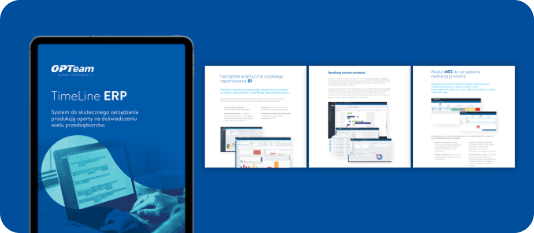
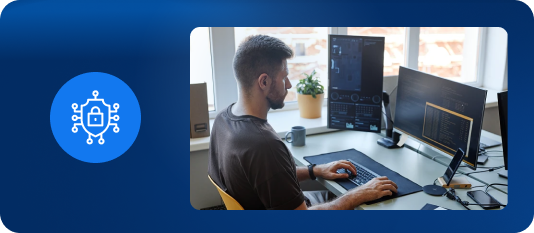
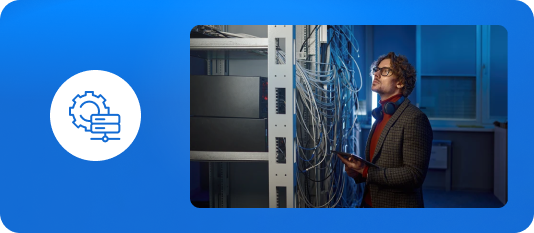
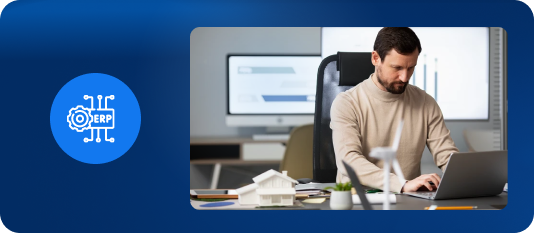
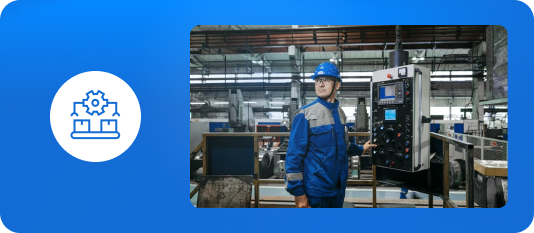
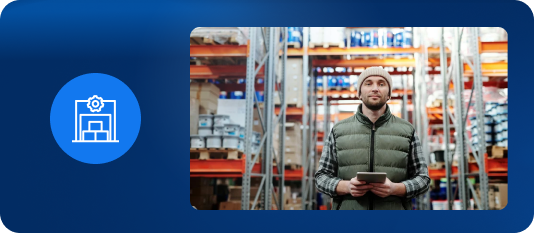





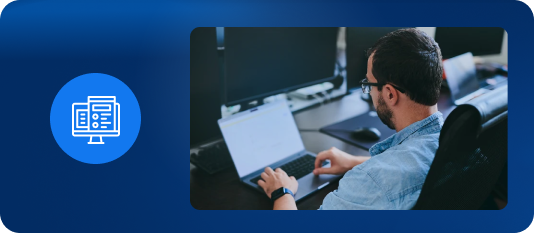
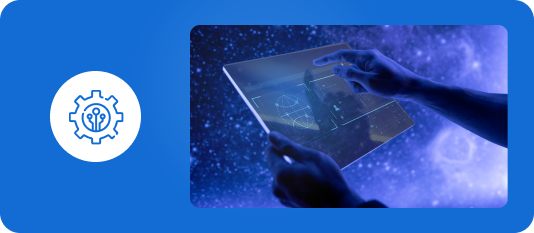
![AI is changing ERP. The impact of AI and automation on the development and personalization of ERP systems [Interview]](/m/oNWxdUQUMKSdbMRFDa2NPCFFDVjorRQ17XxARBQQuFwxhO0BYDgQsJB1kBSV1IQ9TDgYXFmVGDDwBSBYwRyoWJDclRVgYOWcZWwpJFDM0FFgDMBE4Om46LhVeDhs3LAE-KzxRQBgSJh1YClIQBTglUBcbGycrRRwjBFEdBTclBQ88IUpDDg8XEW0lVgspPhRQDgYOKylbAAYWSwQYDSYLJxErQkQ-EjEPWzRXW3ZzHFgOClZwaFAMBh9fHgkGIgUPKzxAGT4SOBRLImwePz8fQwMbDT0kVA8GBFsoBTcqESQhI1FAGB8pG1g8bBc7DgheGBgbIBVYOikAQAQDBioIOTQvU14EOjsBQSFWFDUmJVQQHys9M0YMOAEcHRwPaUhyPi9XUT4MLFoIZAFBdnMWUAwIVnBoVAt7SRAUAwY_Fj8iIlVGQ19qFlciQFt2cw5IEgpWcGhYCDgCV1VASjgNKitsChYCSD8AB2EDAW5hTxMf/ai_zmienia_erp-_wplyw_generatywnej_ai_i_automatyzacji_na_rozwoj_i_personalizacje_systemow_erp_wywiad.webp)
